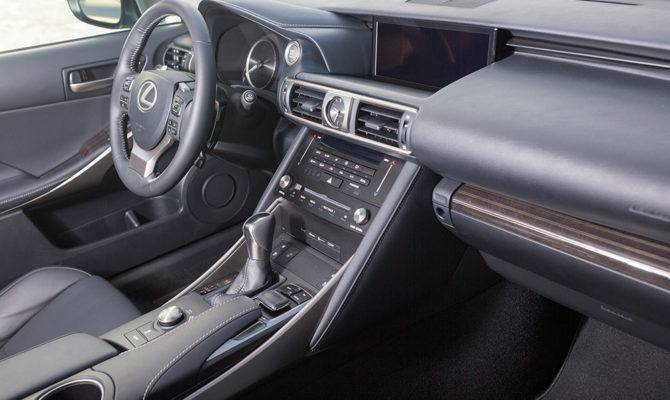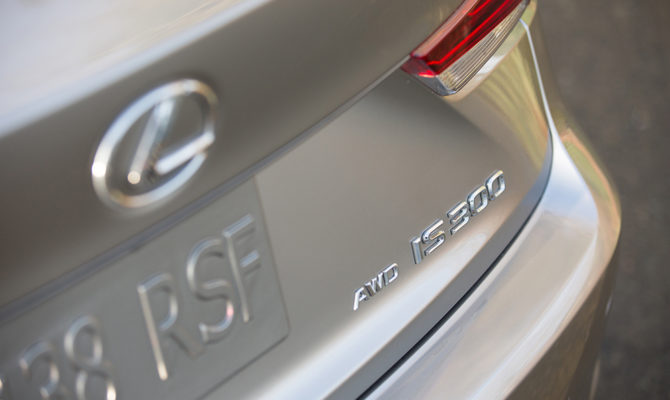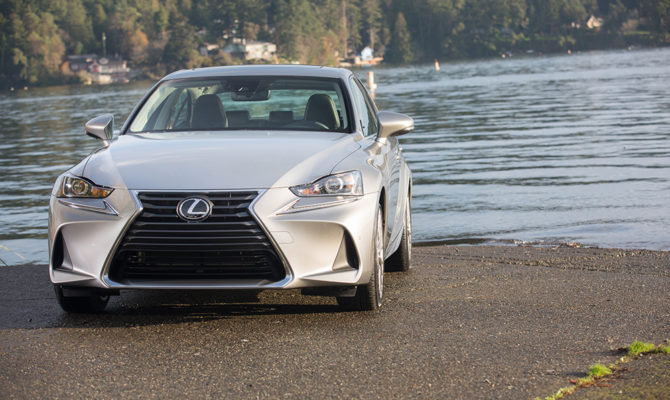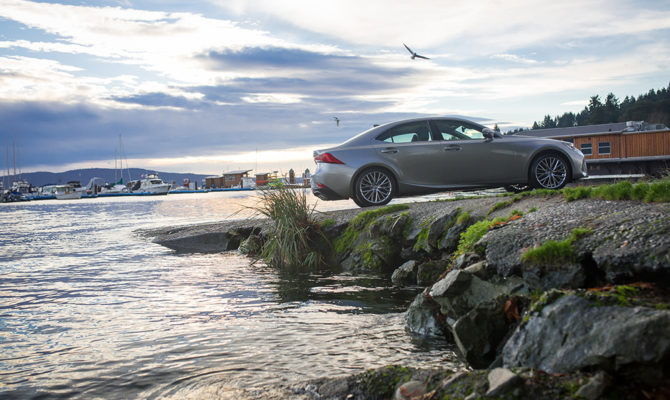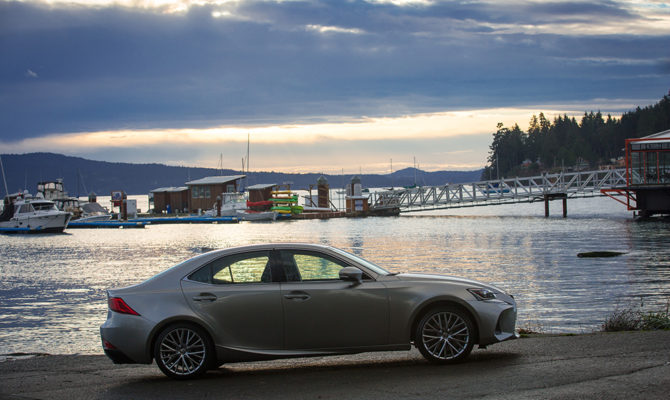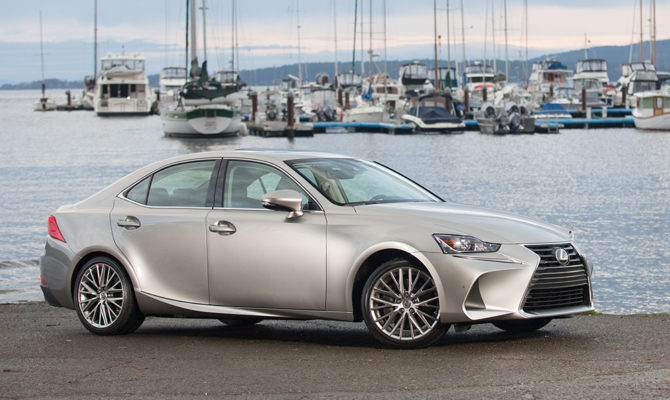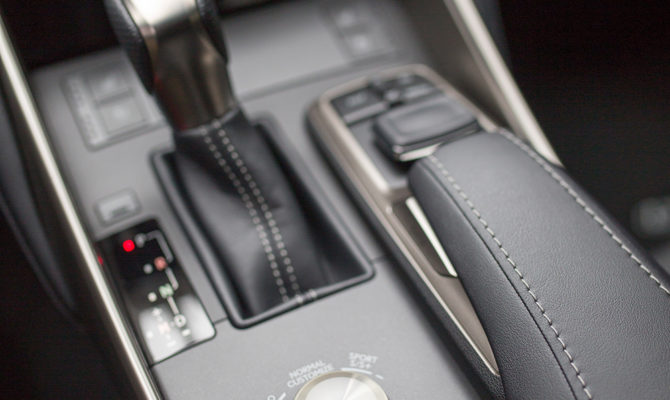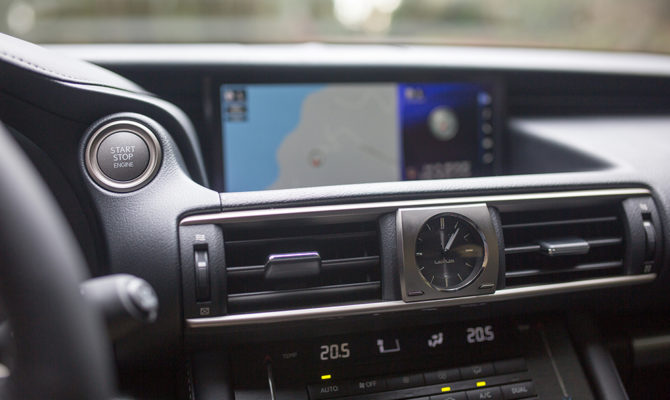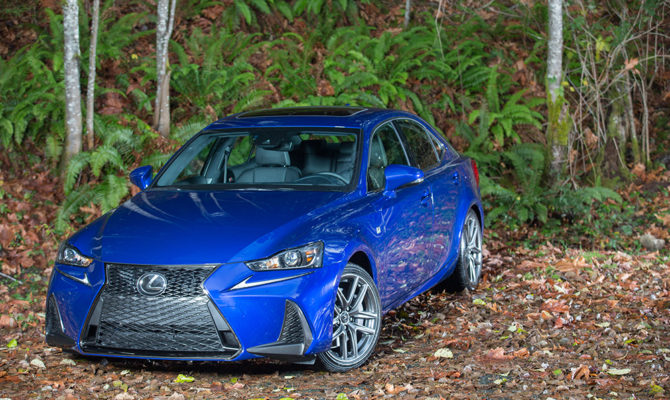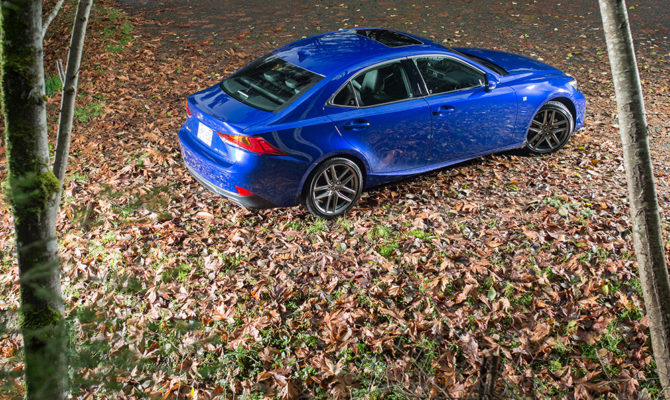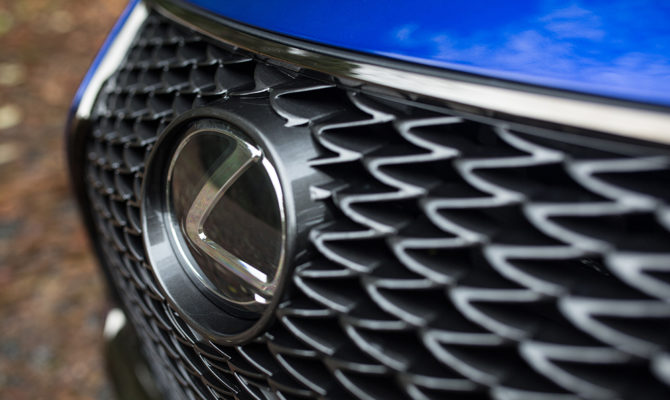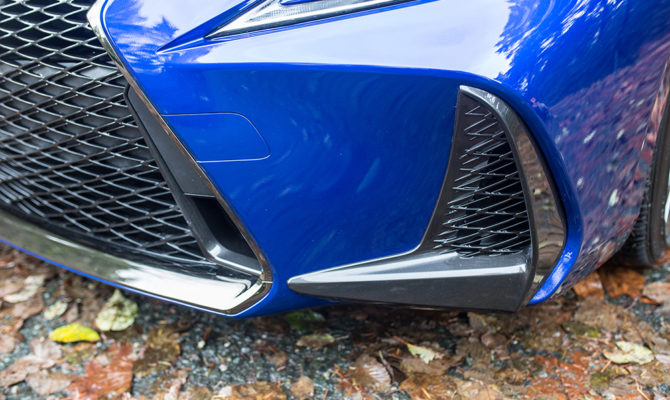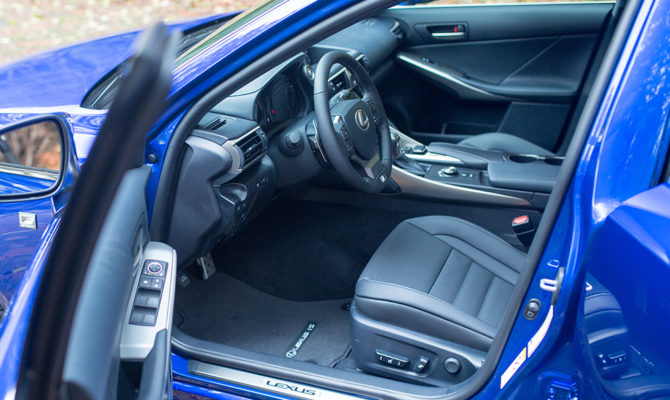“The so called entry-level models belong to a finely crafted line of models designed to be driven hard and fast on the highway and look good on anybody’s driveway.”
There is nothing basic about the Lexus IS sport sedans.
They are defined that way only by their position within the Lexus stable of thoroughbred horsepower and the company pricing structure.
The reality is the so called entry-level models belong to a finely crafted line of models designed to be driven hard and fast on the highway and look good on anybody’s driveway.
Recently, yours truly had the opportunity to get behind the wheel of sample 300 and 350 models on the new Vancouver Island Motorsport Circuit, in the Cowichan Valley. The weather was perfect: it poured down for most of the track time. I’m not being facetious for the often-torrential rain provided the all-wheel drive machines a wonderful opportunity to demonstrate sticky grip and fabulously stable response in the most challenging corners. And raw power on the straights smoothed by six-speed tranny.
None of this kind of testing could be responsibly and sensibly performed on public roads, so it was a worthy and welcome experience. Important because these cars are essentially street legal sports cars. Nevertheless, Lexus knows the limitations profile of their customers so they are loaded with standard active and passive safety features. And there are still more safety alert options – perhaps that should be danger alert – available for those who enjoy fast transit but like an automatic comfort zone that ‘interferes’ when the driver’s skill limitations are anticipated!
During that dreary weather weekend, there was some road work around the spectacular valley routes but frankly it was no fun. No fault of the car and one thing simply beyond Lexus’s control. Just kidding.
It was therefore a delight to get a week with the 2017 IS350 F-Sport AWD a few weeks later. It features the same 3.5-litre V6 as its sibling 300 but tops its 306-horsepower by putting an additional 51 horses at the driver’s disposal. Lots of opportunities to test the range of driver modes that provide mean and lean driving or look-at-and -hear-me performance in the Sport and Sport Plus modes.
I should mention the truly, truly base model is the IS 200t with its 2.0-litre twin scroll turbo four-cylinder power-plant, matched to an eight-speed auto transmission. It generates a generous 241 hp and propels the rear wheels.
But back to the Big Daddy. Travelling the Trans-Canada through the Fraser Valley provides little opportunity to relive one’s boy racer days, especially during the laughably dubbed rush hour. The track day has quenched that thirst anyway.
The Lexus Safety System + includes Dynamic Radar Cruise Control, Pre-Collision System with Pedestrian Detection; Lane Departure Alert with Steering Assist and Automatic High Beams and is standard.
Time to put the DRC to the serious test. I’m a big fan of this technology: it’s just autonomous enough to ease the less enjoyable aspects of such a journey without removing an individual’s personal driving input and preferences.
It looks ahead and controls speed and following distance relative to the vehicle ahead. In moving gridlock – you know what I mean – it means you can relax. But if the pace is too slow for the driver in you then you can simply switch lanes – if it’s safe, of course – and lock a car in the faster lane. Lane departure warning is only for folks that drift off, surely. It does indeed bump you back into line. I was just testing it, you understand.
Auto high beams are a feature for the lazy. Who isn’t after many hours driving on a poorly lit rural route? Oh, I should add: if want to test the pedestrian detection system, on your next ride through Vancouver head down to Granville Island Market. People constantly just wander out in front of you, usually peering at smart phones. Pity they aren’t as smart as their devices.
The exterior has undergone the most significant character change, bringing it more in line with the rakish looks of current Lexi. (Plural for Latin fans).
A few words about the interior. The instrument panel is uncluttered with large centre display screen. The expected fine fit and finish with quality materials is a given. There is more rear leg room than the previous editions but only a character changing and significant lengthening of the platform would allow for more leg space. Not going to happen.
Starting sticker prices: $40,150 for the 200, $42,950 for the 300 and $53,350 for the 300 – the loaded tester topped out at almost $57,000 with all taxes. Fuel economy: 10.6/7.3 L/100 km, city/hwy for the four cylinder and 12.6/9.2 L/100 km, city/hwy for the V6.
Recent Comments
- { Enjoyed your Forest of Bowland in the BMW X5M, particularly the photo of the BMW in front of the main part of Stonyhurst College where... }
- { Bantam designed the Jeep, not Willy's or Ford. The American military gave the original Bantam prototype to Willys and Ford to copy. There is plenty... }
- { All Escalades come with a 6.2-lilter V8 engine that produces 420 horsepower. A six-speed automatic is the only transmission offered and drives the rear wheels.... }
- { Alexandra is an excellent journalist. }
Popular Posts
- Journey to a ‘Sparkling’ Luxury Okanagan Resort “Four lucky readers will put a Dodge Journey’s weekend-...
- The Need For Speed: Hike Those Highway Limits More than half of those polled believe the province sho...
- Drives-U-Crazy… Erratic drivers. An early morning drive from Kelowna to Vancouver is nor...
- Readers Respond: The Pros and Cons of Increasing B.C. Speed Limits Increasing the speed limits will only increase risk to...
- Honda CR-V Review: The Compact Crossover To Get Things Done The CRV is a very stylish and aerodynamic crossover veh...


